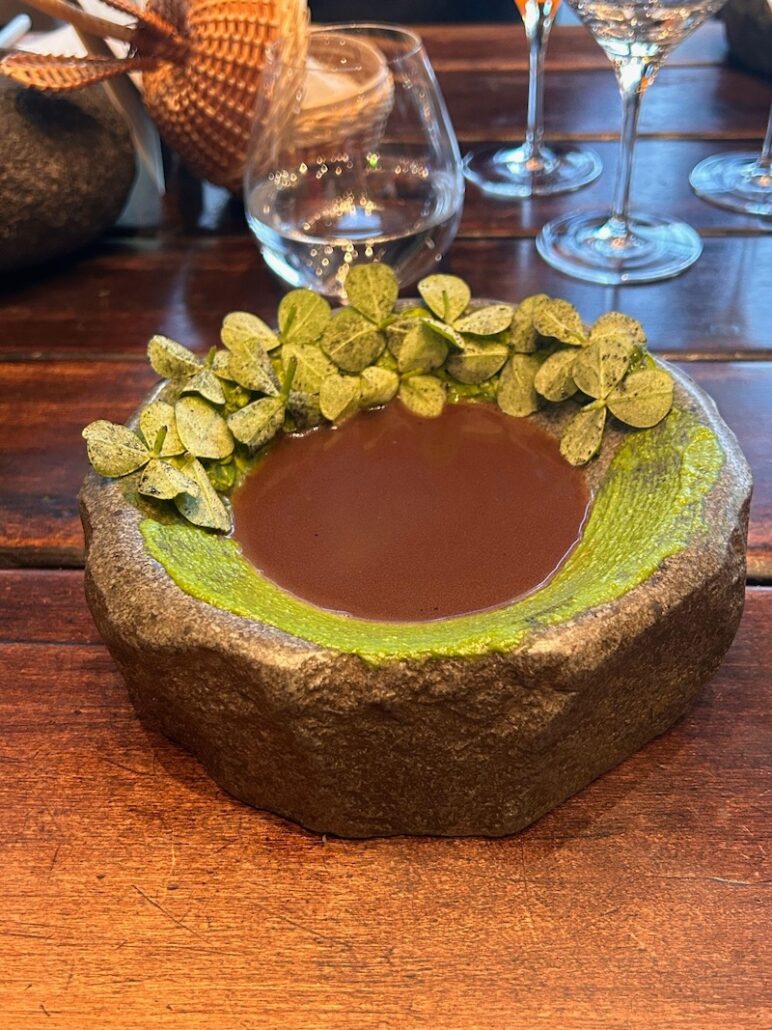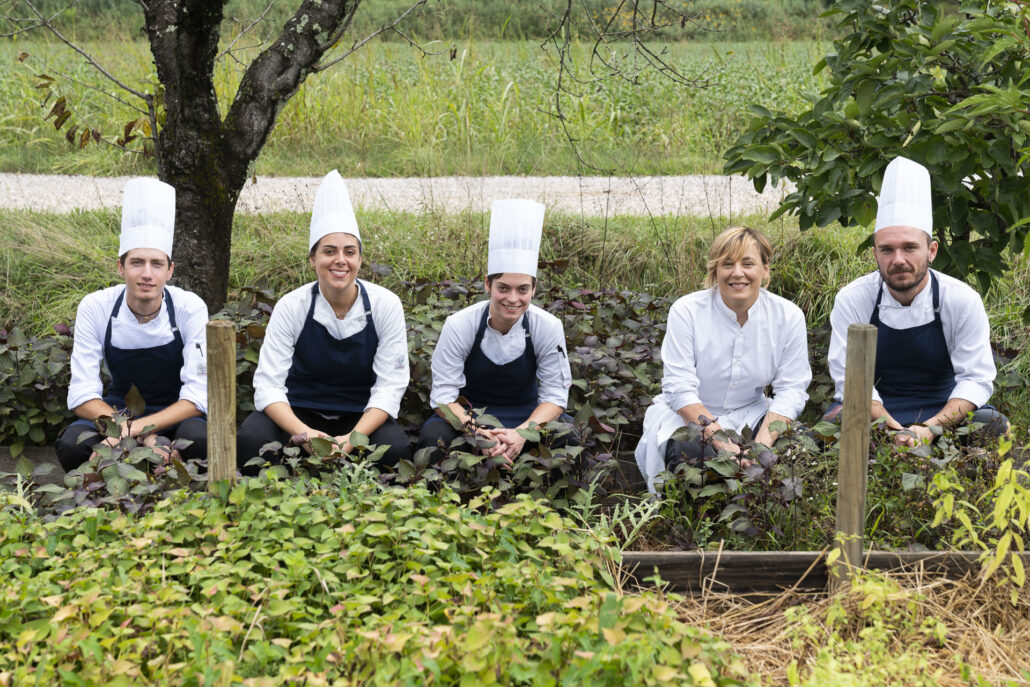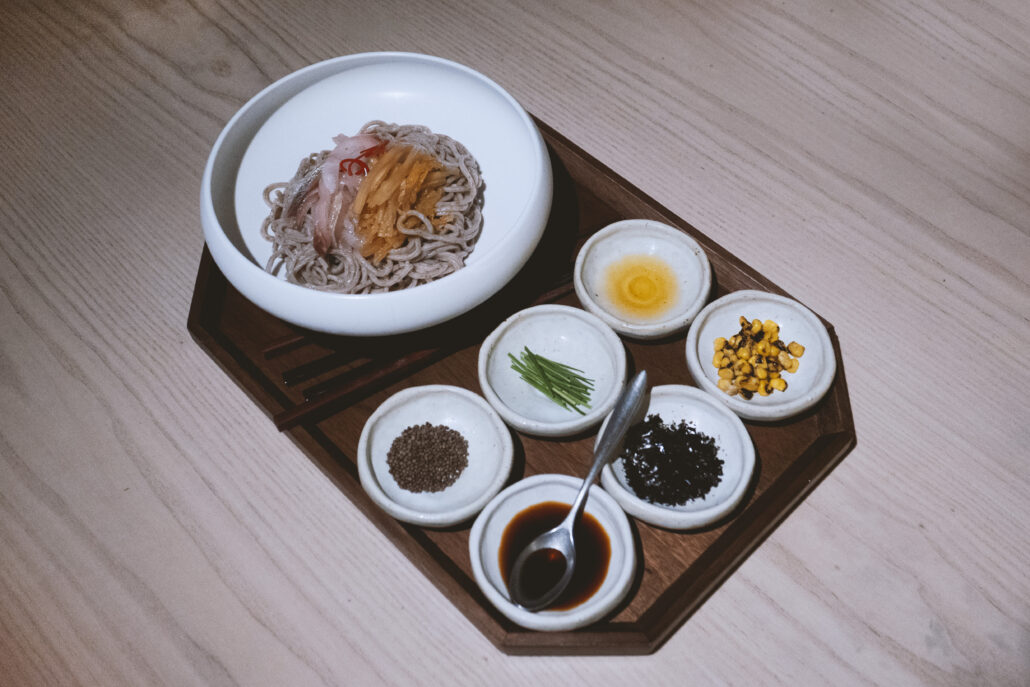English version below
Avete presente dov’è il Cile? A sud. A Sud del mondo. Più a sud del Sudafrica, dell’Australia, a due passi dall’Antartide. Forse solo la Nuova Zelanda è così a Sud. Non è un caso che il payoff del ristorante di cui parliamo in questo articolo (il più importante del Cile) sia: Coming from the South.
Si tratta del Boragó di Santiago, gioiello dello chef cileno Rodolfo Guzmán (che abbiamo raccontato su Cook_inc. 6, ndr), per colpa del quale qualche anno fa dovetti cercare sul dizionario la parola “endemico”.
endèmico agg. [dal fr. endémique, der. di endémie: v. endemia] (pl. m. –ci). – 1. Proprio di un determinato territorio
Conosco Rodolfo da una decina di anni e come lo conosco io, lo conoscono tutti gli appassionati di alta cucina. Il suo nome è già parte della storia della gastronomia mondiale da diversi anni, sempre nella lista dei 50 migliori ristoranti del mondo – per assoluto merito – e innovatore insieme a pochi altri chef nel mondo della grande cucina endemica.

Sono quasi tutti Sudamericani e secondo me questo merita una riflessione.
I Paesi caratterizzati da un forte colonialismo, come appunto è avvenuto in America dopo lo sbarco di Colombo nell’Isola di San Salvador, sono quelli che hanno avuto oggettiva difficoltà a riscoprire le proprie radici. L’invasione coatta da parte di un popolo straniero ha inizialmente separato gli indigeni dai coloni ma la storia è poi evoluta in direzione della trasformazione etnica.
Oggi in Sud America gran parte della popolazione ha sangue nativo nelle vene e si sente fieramente legato al proprio Paese, del quale però – fino a poco fa – ignorava le origini reali.
È grazie al lavoro di antropologi, storici, intellettuali, artisti e chef che gli abitanti di questi territori hanno iniziato a riscoprire le proprie fondamenta, quelle autoctone, in una parola: precolombiane.
La riscoperta di questo passa per l’osservazione etnologica delle tribù rimaste incontaminate (praticamente più nessuna) e – soprattutto – dall’interazione con il territorio, imparando a selezionare, conoscere e trattare gli ingredienti locali.
In questo campionato, Rodolfo Guzmán è il campione assoluto.

Grazie anche al suo lavoro, gli incredibili ecosistemi del Cile sono stati catalogati e resi accessibili a studiosi e appassionati, un lavoro davvero enciclopedico che merita il plauso delle comunità scientifiche internazionali.
Ma quindi come si mangia da Boragó?
Si mangia molto bene e qui il concetto di “esperienza”, così abusato e ormai quasi fastidioso, si riempie finalmente di significato ed è l’unico modo per descrivere una cena da Rodolfo Guzmán.
Attraverso un percorso fatto di circa 15 piatti, mi sono trovata ad attraversare ogni paesaggio del Cile, dalle scogliere crepitanti alle cime mozzafiato, passando per ingredienti sconosciuti trasformati in piatti dai sapori decisi, a volte molto piacevoli, altre volte più complessi ma sempre realizzati con pensiero, talento e creatività.




Gli ingredienti sono raccolti da Rodolfo e dal suo staff con cadenza settimanale, dalle bacche alle alghe, dai fiori coloratissimi alle strane piante della Patagonia. La cucina è frutto di tecniche classiche affiancate a tecniche ancestrali, prese in prestito dalla cultura indigena e riproposte in forme nuove, con una grande attenzione alle fermentazioni e alle tecniche di conservazione.

Non è stato facile per Rodolfo e Alejandra (sua moglie) realizzare tutto questo. In un Paese dove il sandwich di ispirazione tedesca è il piatto più popolare, credere nella cucina endemica non è stato affatto semplice, ma come tutte le storie belle, anche questa ha un lieto fine. Boragó, dal Sud Sud, ha trovato il suo posto in cima al mondo.
–––––––––––––––––––––––––––––––––––––––––––––––––––––––––––––––––––––––––––––––
Boragó di Rodolfo Guzmán: coming from the South, South.
Do you know where Chile is? South. At the southern end of the world. Further south
than South Africa, Australia, just a stone’s throw from Antarctica. Perhaps New Zealand is just as far south. It’s no coincidence that the slogan of the restaurant we’re talking about in this article (Chile’s most important) is: Coming from the South.
We’re talking about Boragó in Santiago, the gem of Chilean chef Rodolfo Guzmán, because of whom I had to look up the word ‘endemic’ in the dictionary a few years ago.
Endemic adj. [from French endémique, derived from endémie: see endemia] (plural -ci). – 1. Native to a specific territory.
I’ve known Rodolfo for more than 10 years, and as I know him, so do all aficionados of haute cuisine. His name has been part of the history of world gastronomy for several years, always on the list of the 50 best restaurants in the world – entirely on merit – and an innovator alongside a few other chefs in the world of high-end endemic cuisine.
Most of them are South American, and I think this deserves some reflection.
Countries characterized by strong colonialism, as happened in America after Columbo landed on the Island of San Salvador, are those that have objectively struggled to rediscover their roots. The coercive invasion by a foreign people initially separated the indigenous from the settlers, but history then evolved towards ethnic transformation.
Today, in South America, a large part of the population has native blood in their veins and feels strongly attached to their country, of which, until recently, they were unaware of the real origins.
Thanks to the work of anthropologists, historians, intellectuals, artists, and chefs, the inhabitants of these territories have begun to rediscover their foundation, those indigenous and endemic, in a word: pre-Columbian.
The rediscovery of this passes through the ethnological observation of the tribes that remained uncontaminated (practically none left) and – above all – through interaction with the territory, learning to select, know, and treat local ingredients.
In this championship, Rodolfo Guzmán is the absolute champion. Thanks also to his work, the incredible ecosystems of Chile have been cataloged and made accessible to scholars and enthusiasts, a truly encyclopedic work deserving of praise from international scientific communities.
So, what’s it like eating at Boragó?
You eat very well, and here the concept of “experience,” so overused and now almost annoying, finally fills with meaning and is the only way to describe a dinner at Rodolfo Guzmán’s.
Through a journey of about 15 dishes, I found myself traversing every landscape of Chile, from crashing cliffs to breathtaking peaks, passing through unknown ingredients transformed into dishes with bold flavors, sometimes very pleasant, other times more complex but always executed with thought, talent, and creativity.
The ingredients are gathered by Rodolfo and his staff on a weekly basis, from berries to seaweed, from colorful flowers to strange plants from Patagonia. The cuisine is the result of classic techniques alongside ancestral techniques, borrowed from indigenous culture and presented in new forms, with a great emphasis on fermentation and preservation techniques.
It wasn’t easy for Rodolfo and Alejandra (his wife) to achieve all this. In a country where the German-inspired sandwich is the most popular dish, believing in endemic cuisine was not at all simple, but like all beautiful stories, this one also has a happy ending.
Boragó, from the far south-south, has found its place at the top of the world.





